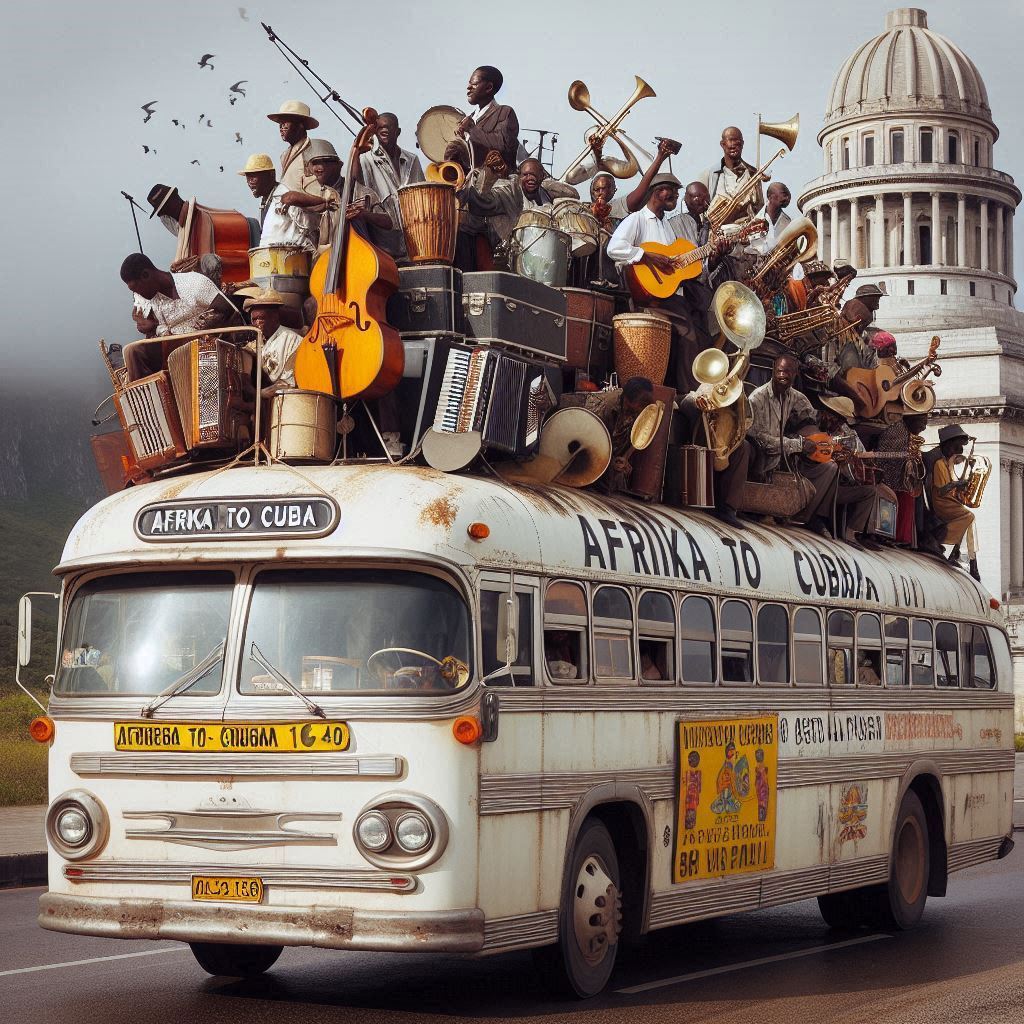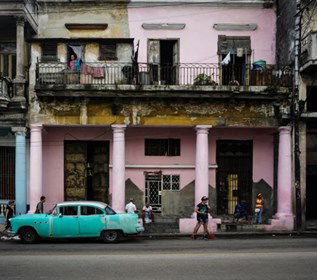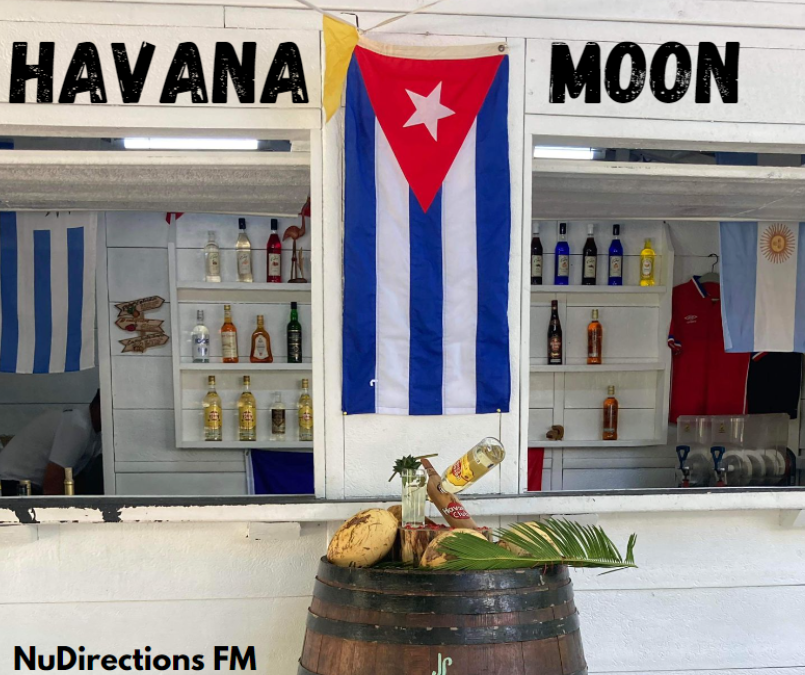Cameroon To Cuba, A Journey Through Afro-Latin Rhythms

A Journey Through Afro-Latin Rhythms: A Playlist That Connects Two Continents The relationship between West African music and Latin music is like a dialogue stretching across centuries and oceans, a living testament to cultural resilience, migration, and adaptation. From the shores of West Africa to the bustling streets of Havana, the cross-pollination of rhythms and traditions has birthed an enduring legacy of music. This playlist reflects the dynamic, borderless evolution of Afro-Latin sounds. Let's dive in, track by track, and discover the rich interplay of these two worlds.

1. Pape Fall – African Salsa - I start our journey with Senegal’s Pape Fall, whose mastery of "African Salsa" makes him a cornerstone in the genre. With this track, Fall blends the upbeat tempo of Cuban salsa with the traditional mbalax rhythms of Senegal. His smooth, soulful vocals ride the wave of brass and percussion, creating a seamless fusion where Africa meets Cuba in a perfect sonic marriage. The lively horns mirror classic salsa, but the drumming feels distinctly African, grounding the track in its roots.

2. Mama Badema Sissoko – Safiatou - Next, I move deeper into West Africa with Malian griot Mama Badema Sissoko’s “Safiatou.” This song, drenched in the delicate sound of the kora, reflects the more traditional side of African music that influenced Cuban rhythms in the first place. The melancholic tone of Sissoko's vocals paired with the hypnotic kora melodies are a reminder of how music from the Mandé empire found its way into Caribbean rhythms, infusing the syncopations of salsa with a deeper sense of history and narrative.

3. Chocolate – Ritmo De Mi Son - Cuban trumpeter and composer Alfredo “Chocolate” Armenteros takes us into the heart of Cuba with “Ritmo De Mi Son.” His trumpet soars over a bed of Cuban percussion, invoking the island’s rich tradition of son cubano, a genre born from the intermingling of Spanish guitar and African rhythms. The son beat is infectious, drawing clear parallels to the clave rhythms heard in African music, making this a perfect bridge between the two continents.

4. Balla Tounkara – Le monde est fouMali’s Balla Tounkara brings us back to the African continent with “Le monde est fou.” The mix of traditional Malian instrumentation—again, the mesmerizing kora—and Tounkara’s warm vocals tell a story of global madness but with an undeniably rhythmic allure. There’s a modern Afro-jazz twist to the song, illustrating how African artists continue to innovate while staying connected to their roots.

5. Tam Tam 2000 – Me vuelvo Guajiro“Me vuelvo Guajiro” transports us to a rural, laid-back Cuban atmosphere, a nod to the humble “guajiro” or peasant farmer. Tam Tam 2000 infuses the traditional Cuban guajira rhythm with Afro-Cuban percussion, pulling at the ancestral threads of African drumming while capturing the essence of life in Cuba’s countryside. The subtle complexity of the arrangement is deceptively simple, much like the connection between Africa and Cuba itself.

6. Ernest Chico Alvarez – Val’CarreteroVeteran Cuban musician Ernest Chico Alvarez delivers a deeply emotive rendition of “Val’Carretero.” His homage to the old Cuban countryside carries a rhythmic undercurrent that pulls straight from African traditions, especially in the percussion-heavy interludes. The driving bassline and handclaps resonate with the African diaspora's spirit, reminding us how the cross-Atlantic exchanges shaped this unique sound.

7. Gnonnas Pedro – Yiri Yiri Boum - I head back to West Africa with Benin’s Gnonnas Pedro, a titan of Afro-Latin music. “Yiri Yiri Boum” is a dance floor-ready mix of highlife and Afro-Cuban grooves. The call-and-response vocals, the rhythm guitar, and the upbeat tempo pay homage to both African traditional music and the salsa scene Pedro dominated. This track is a testament to how African musicians not only absorbed Latin music but made it their own, breathing new life into it through their own regional influences.

8. Laba Sosseh – Son SoneateLaba Sosseh - the Gambian singer, is another heavyweight in the world of Afro-Latin fusion. His track “Son Soneate” channels the very essence of Afro-Cuban son music, bringing African sensibility into the distinctly Cuban genre. His voice, smooth and confident, floats over intricate layers of percussion, and his use of the clave—the heartbeat of Cuban music—creates an unmistakable link between his African homeland and the Caribbean.

9. Dibango is perhaps one of Africa’s greatest musical exports, and his jazz-infused take on Afrobeat has influenced generations. “Bessoka (Version Courte)” is a brief but powerful burst of African jazz-fusion, with Dibango’s saxophone sailing over rhythmic patterns that echo both the Caribbean and West Africa. Dibango's genius lies in his ability to make jazz and traditional African music dance together, a metaphor for the African-Latin relationship itself.

10. Sonlokos – Rumba Con Sabor a Melao - Now, I plunge back into the depths of Cuban rumba with Sonlokos' “Rumba Con Sabor a Melao.” This track pulses with the unmistakable rhythm of the Afro-Cuban rumba, where the drums and vocals drive the song forward. The African heartbeat is ever-present in the drumming patterns, reminding us that without Africa, there would be no rumba. It's earthy, celebratory, and full of life.

11. Tshala Muana – Lekela Muadi - From the Congo, Tshala Muana's “Lekela Muadi” provides a beautiful contrast. The track showcases the Soukous genre, itself influenced by Cuban rumba, which made its way back across the Atlantic to Africa. Her strong, defiant vocals ride over intricate guitar work, and the layered percussion feels like a dialogue between two continents that never really stopped speaking to each other.

12. Monte Adentro – Igualito Que Tu - Monte Adentro captures the sound of traditional Cuban son in “Igualito Que Tu,” but with a modern edge. The Cuban tres guitar, coupled with tight vocal harmonies, feels timeless, yet this is music that is still evolving, still drawing from the African rhythms that birthed it. Monte Adentro gives us a sense of how the Afro-Cuban sound continues to live and breathe through new generations of musicians.

13. Le Sahel – Jammo - Le Sahel Orchestra was one of Senegal’s most important bands in the 60s and 70s, and “Jammo” is a prime example of their ability to blend Cuban sounds with local West African musical traditions. The horn section feels straight out of Havana, while the vocal delivery and percussion carry the weight of Senegalese mbalax. This is music of the people, for the people, embodying both the celebration and the struggle of African and Latin cultures.

14. Alune Wade, Harold López-Nussa – Aminata - Bass virtuoso Alune Wade teams up with Cuban pianist Harold López-Nussa for “Aminata,” a gorgeous fusion of jazz, Afrobeat, and Cuban rhythms. Wade’s thick, melodic basslines pair beautifully with López-Nussa’s fluid piano playing, creating a sound that is both distinctly modern and deeply rooted in tradition. This collaboration is a perfect example of how African and Latin musicians continue to find common ground, pushing the boundaries of their respective genres.

15. Buena Vista Social Club – Chan ChanNo Afro-Latin playlist would be complete without a nod to the Buena Vista Social Club. “Chan Chan,” written by the legendary Compay Segundo, is one of the most iconic Cuban songs of all time. The lilting, slow son rhythm, the sparse yet melodic guitar lines, and the nostalgic lyrics transport you to another time. The African influence on this track is subtle yet pervasive, a reminder of how deeply the roots of Cuban music dig into African soil.
Final Thoughts, This playlist is more than a collection of songs; it's a testament to the power of music as a universal language. The African rhythms that sailed across the Atlantic centuries ago have come full circle, constantly evolving as they cross cultural and geographical boundaries. Whether you're dancing to salsa in the streets of Havana or swaying to the sounds of mbalax in Dakar, the common heartbeat of these rhythms connects us all.
Enjoy the journey—and let the music take you to places where borders dissolve, and continents collide.
Jazz Matters
This track-by-track breakdown highlights the cultural, rhythmic, and historical connections in a way that dives deep into both continents' musical heritage.